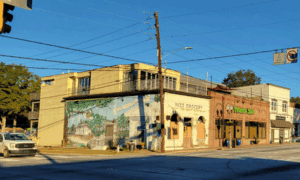The Fayetteville Tax Allocation District (TAD) redevelopment plan designed to stimulate economic development in some of the city’s older commercial areas was back on the Oct. 17 agenda after being tabled earlier this month. But the resolution to move ahead with the plan had not been advertised correctly so the resolution was put on hold for the second time.
City Community Development Director Brian Wismer said resolutions are not customarily advertised. But as TAD consultant Ken Bleakly noted at the Oct. 17 meeting, the resolution for a TAD redevelopment plan does require advertising that had not been accomplished as prescribed by statute. That advertising requirement will be met and the item is expected to be back on the agenda in November.
The TAD redevelopment plan was tabled at the Oct. 3 meeting after Fayette County Commissioner Randy Ognio said he believed the county should have been more involved in the process prior to the council voting on the resolution.
City officials subsequently met with officials from Fayette County and the Fayette County School System, Wismer said, adding that both tax levying entities are supportive of the resolution.
Wismer said the redevelopment plan identifies the vision and goals for the TAD, provides an assessed valuation for the properties within the TAD, methods of financing and a school system impact analysis. The hypothetical scenarios that were presented earlier are also included to create a legitimate forecast of revenue streams. It is important to note, however, that these scenarios are used for modeling purposes, and does not limit or dictate how an actual site can be developed, said Wismer.
“The redevelopment plan is an integral step in the eventual creation of the TAD. It is important to adopt the plan in a timely manner so that it can become effective in the 2014 tax year,” Wismer said. “As this will further the city’s redevelopment efforts of aging commercial areas, staff recommends adoption of the resolution and redevelopment plan as proposed.”
The five TAD areas on the map include areas along Glynn Street and represent 3.68 percent of the city’s taxable digest. The largest number of TAD project areas are along North Glynn Street and include some of the city’s oldest commercial areas, many of which are sitting partially vacant and contributing fewer dollars to the tax digest.












Leave a Comment
You must be logged in to post a comment.